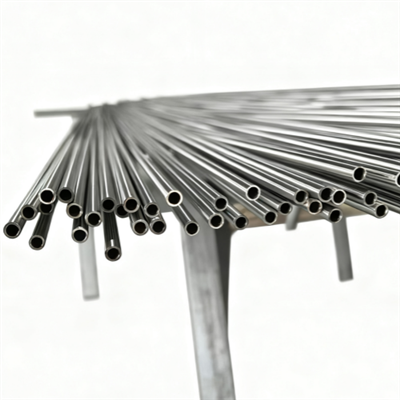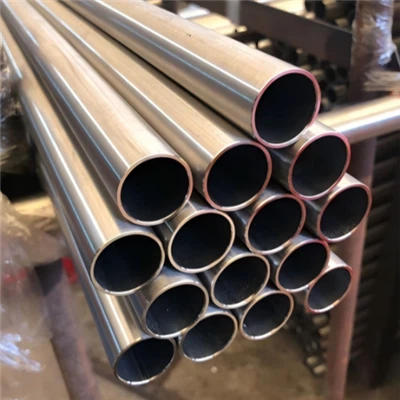Formability is a crucial aspect when it comes to the utilization of stainless steel pipes in various industries. As a reliable supplier of 317L stainless steel pipes, I am often asked about the formability of this particular material. In this blog post, I will delve into the concept of formability, explore the factors that affect the formability of 317L stainless steel pipes, and discuss its significance in different applications.
Understanding Formability
Formability refers to the ability of a material to undergo plastic deformation without cracking or fracturing. In the context of stainless steel pipes, formability determines how easily the pipes can be shaped, bent, stretched, or otherwise manipulated into the desired configuration during manufacturing processes. A highly formable material can be formed into complex shapes with minimal effort and without compromising its structural integrity.
Factors Affecting the Formability of 317L Stainless Steel Pipe
Chemical Composition
The chemical composition of 317L stainless steel plays a significant role in its formability. 317L is a low-carbon, molybdenum-bearing austenitic stainless steel. The low carbon content reduces the risk of carbide precipitation during welding and heat treatment, which can enhance the material's corrosion resistance and formability. Molybdenum improves the pitting and crevice corrosion resistance, as well as the overall strength and toughness of the steel, contributing to better formability under various forming conditions.
Microstructure
The microstructure of 317L stainless steel also influences its formability. A fine-grained microstructure generally provides better formability compared to a coarse-grained one. Fine grains can accommodate more plastic deformation and distribute stress more evenly, reducing the likelihood of cracking during forming processes. Heat treatment and processing techniques can be used to control the grain size and optimize the microstructure for improved formability.
Mechanical Properties
Mechanical properties such as yield strength, tensile strength, and elongation are important indicators of formability. 317L stainless steel typically has a relatively low yield strength and high elongation, which means it can be deformed to a large extent before reaching its yield point and can stretch significantly without breaking. These properties make it suitable for various forming operations, including bending, rolling, and deep drawing.
Temperature
Temperature has a significant impact on the formability of 317L stainless steel pipes. At elevated temperatures, the material becomes more ductile, and the flow stress decreases, making it easier to form. However, excessive temperatures can also lead to grain growth and other microstructural changes that may degrade the material's properties. Therefore, it is important to control the forming temperature within an appropriate range to achieve the best formability.
Forming Processes for 317L Stainless Steel Pipe
Bending
Bending is one of the most common forming processes for stainless steel pipes. 317L stainless steel pipes can be bent using various methods, such as cold bending and hot bending. Cold bending is suitable for small to medium-sized pipes and can be performed using mechanical or hydraulic bending machines. Hot bending is typically used for larger pipes or when a high degree of precision is required. The high formability of 317L stainless steel allows for tight bending radii without cracking or wrinkling.
Rolling
Rolling is another important forming process that can be used to shape 317L stainless steel pipes. In rolling, the pipes are passed through a series of rollers to reduce their thickness, increase their length, or change their cross-sectional shape. The formability of 317L stainless steel enables it to be rolled into different shapes and sizes with good dimensional accuracy and surface quality.
Deep Drawing
Deep drawing is a process used to form cylindrical or box-shaped components from flat sheets or blanks. 317L stainless steel can be deep drawn into various shapes, such as cups, cans, and other containers. The high ductility and formability of the material allow for deep drawing operations with relatively low forming forces and minimal thinning of the wall thickness.


Applications of 317L Stainless Steel Pipe Based on Formability
Chemical and Petrochemical Industries
In the chemical and petrochemical industries, 317L stainless steel pipes are widely used due to their excellent corrosion resistance and formability. The ability to form the pipes into complex shapes allows for the construction of pipelines, heat exchangers, and other equipment that can withstand harsh chemical environments. For example, the pipes can be bent and welded to create custom-designed piping systems for chemical processing plants.
Food and Beverage Industry
The food and beverage industry requires materials that are hygienic, corrosion-resistant, and easy to clean. 317L stainless steel pipes meet these requirements and can be formed into various shapes to fit the specific needs of food processing equipment. The formability of the material allows for the fabrication of pipes, tanks, and other components that are used in the production, storage, and transportation of food and beverages.
Architectural and Structural Applications
In architectural and structural applications, 317L stainless steel pipes are used for their aesthetic appeal, strength, and formability. The pipes can be bent, curved, and welded to create unique and innovative designs for building facades, handrails, and other structural elements. The high formability of 317L stainless steel enables architects and designers to bring their creative ideas to life.
Comparison with Other Stainless Steel Pipes
When comparing the formability of 317L stainless steel pipes with other types of stainless steel pipes, such as 304L Stainless Steel Tube, TP347h Stainless Steel Pipe, and 310 SS Pipe, 317L generally offers a good balance of formability and corrosion resistance. While 304L has good formability, 317L provides better resistance to pitting and crevice corrosion, especially in chloride-containing environments. TP347h is known for its high-temperature strength and creep resistance, but 317L may have better formability at room temperature. 310 SS Pipe has excellent high-temperature oxidation resistance, but 317L is more formable and suitable for applications where corrosion resistance at lower temperatures is a priority.
Conclusion
The formability of 317L stainless steel pipes is a key factor that makes them suitable for a wide range of applications in various industries. The combination of its chemical composition, microstructure, mechanical properties, and temperature sensitivity allows for easy forming into complex shapes using different forming processes. Whether it is bending, rolling, or deep drawing, 317L stainless steel can be processed to meet the specific requirements of different applications. If you are in need of high-quality 317L stainless steel pipes for your projects, please feel free to contact us for more information and to discuss your procurement needs.
References
- ASM Handbook, Volume 1: Properties and Selection: Irons, Steels, and High-Performance Alloys
- Stainless Steel Handbook, by L. H. Van Stone
- Corrosion Resistance of Stainless Steels, by R. W. Staehle






